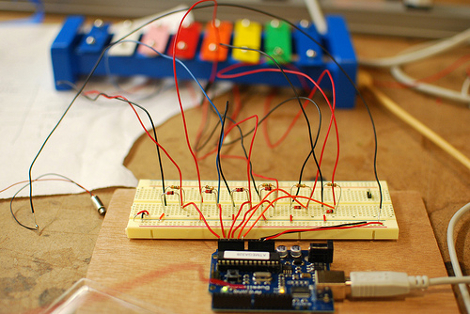
MENACE, the Matchbox Educable Noughts And Crosses Engine, is a fancy name for a machine that plays Tic-Tac-Toe. The concept is a product of Professor [Donald Mitchie]’s work in the 1960’s and was featured as an example in the “A New THEORY of AWESOMENESS and MIRACLES” talk given at this year’s UK games conference.
[James Bridle] built this fascinating example of how a computational system can learn from its successes and failures. Each box corresponds to one of 304 different board layouts. The operator uses an index sheet to locate the box that corresponds to the current state, shakes the box, then looks to see which bean has randomly fallen into a partition in the box. The color/type of bean corresponds to a space that the machine has “chosen” for that move. If MENACE won the game a bead matching the move that was played would be added to each box used. If MENACE lost, a bead would be removed from each box used. This way the machine cannot make the exact same mistakes twice, and is more likely to repeat successful solutions.
[James] notes that he couldn’t find any evidence of this machine actually being built before. It is possible that this was always a theoretical device but now we’ve seen an actual build. We consider this to be a computer because it is calculating moves based on probability of success but what do you think? If you’re thirsting for more pictures there’s plenty to see in the Flickr set he’s posted.
[via BoingBoing]
















